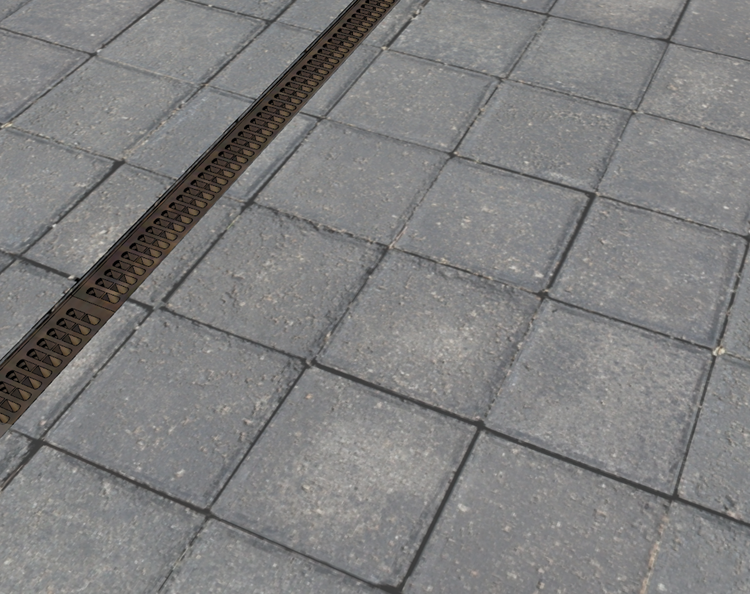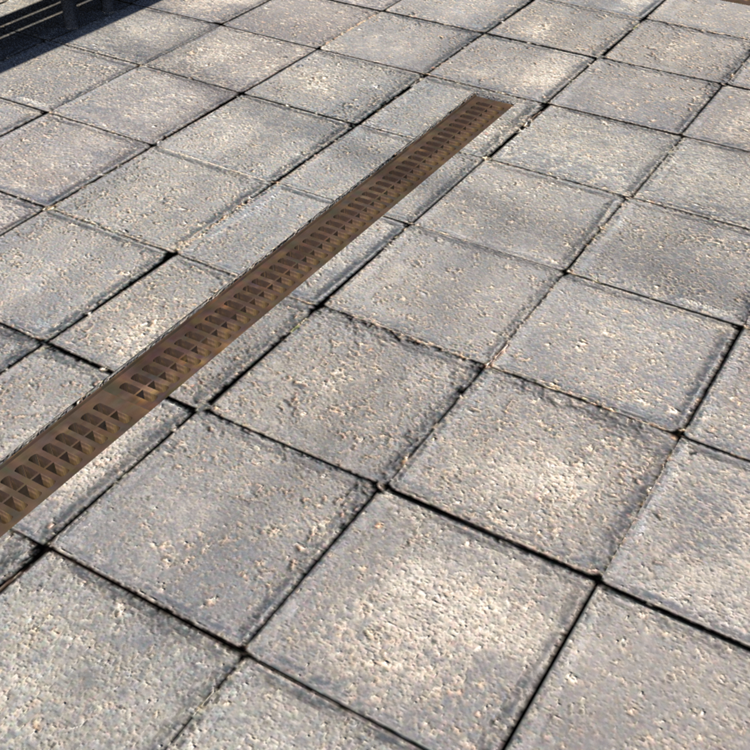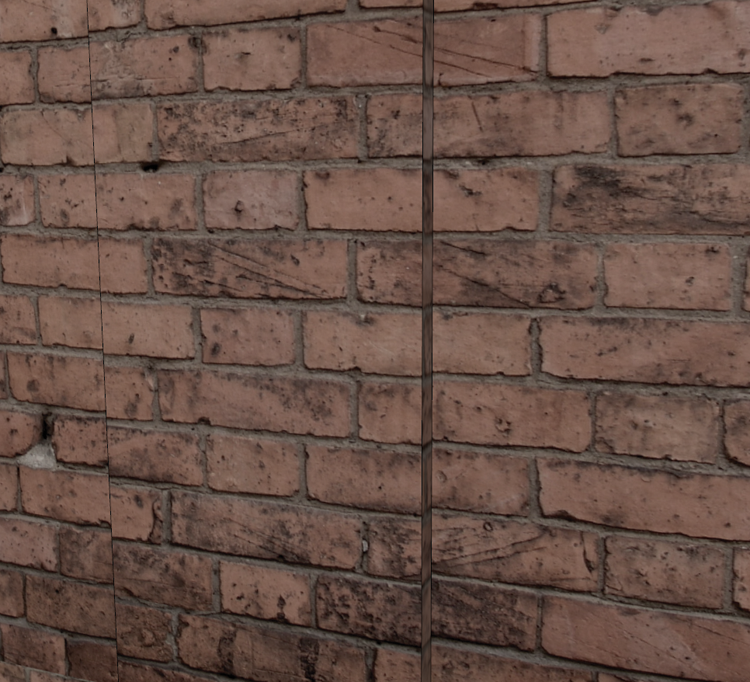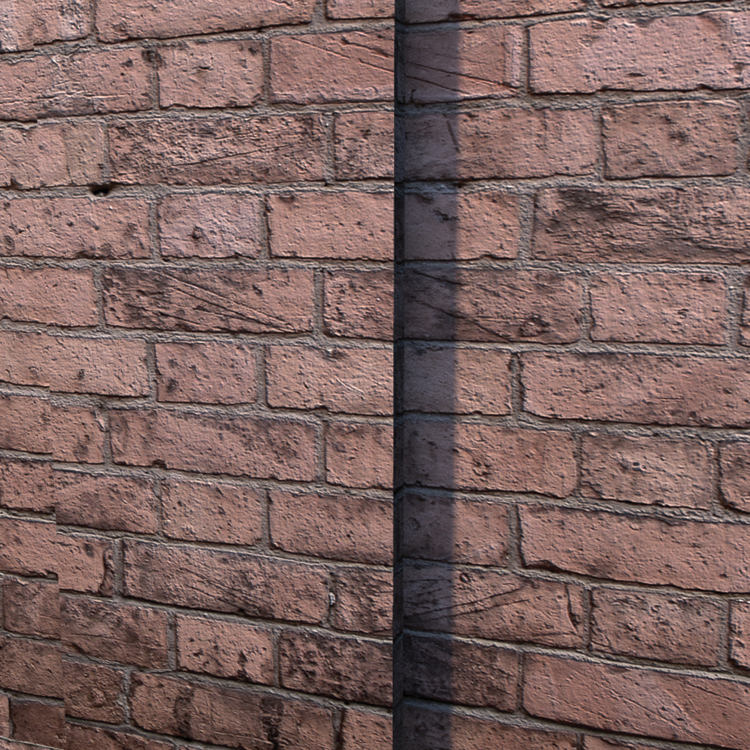Bump Values
Bump can be described as 3D contrast. It controls how smooth or coarse a material appears. Bump is a universal value found in all IRPs and is never applied with preset values—at least for now.
The higher the bump value, the coarser or more contrasted the surface will render, allowing some materials to take on a 3D appearance. For example, bump will allow materials like concrete with scoring, house siding, fabrics, or countertops to possess a 3D relief (Fig. 21.6, Fig. 21.7). Bump can make individual brick patterns appear extruded or provide soft indentations to painted walls and surfaces (Fig. 21.8, Fig. 21.9). Bump can cause lawn and similar groundcovers to have a rough character, and it can provide subtle relief to brushed metals.
Fig. 21.6: A bump value will be applied to the concrete texture in SketchUp.

Fig. 21.7: The same concrete surface as it appears rendered with a bump value for greater surface contrast and depth.

Fig. 21.8: The brick texture viewed in SketchUp

Fig. 21.9: The brick surface after it’s rendered with a bump value applied

Value Range
A little ...
Get Rendering in SketchUp: From Modeling to Presentation for Architecture, Landscape Architecture and Interior Design now with the O’Reilly learning platform.
O’Reilly members experience books, live events, courses curated by job role, and more from O’Reilly and nearly 200 top publishers.

